#Extraordinary Tales
Photo
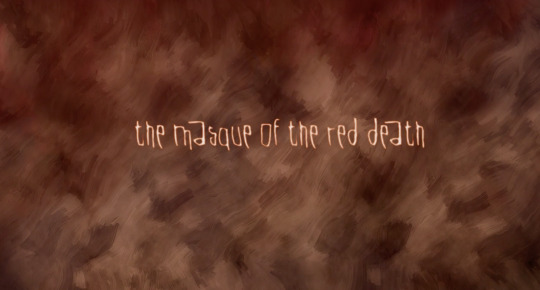






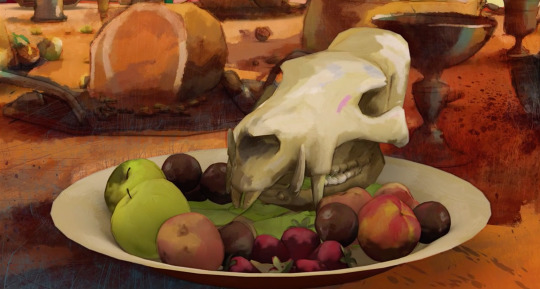


Extraordinary Tales - The Mask of the Red Death
71 notes
·
View notes
Text
10 Film (non del tutto horror) da scoprire ad Halloween
Cosa guardiamo questo Halloween? Martina Mazzarella ci consiglia dieci film a tema, non del tutto horror, non del tutto mainstream, da godersi negli ultimi giorni di Ottobre.
#IlControVerso #notizie #pensieri #politica #libertà
#horror #film #halloween
Come ogni anno, ci stiamo avvicinando al Natale. E se le logiche del marketing impongono di predisporre quanto prima lo spirito dei consumatori alla mania decorativa e allo strascico di doni da acquistare, c’è prima un’altra piccola ricorrenza che deve sgusciare via dalle pagine del calendario: prima di riempire vetrine e città con il viso benevolente di Babbo Natale e una serie di luccichii,…

View On WordPress
#Extraordinary tales#halloween#Il villaggio dei dannati#Jim Jarmusch#Kaneto Shindo#Kuroneko#Kwaidan#La morte ti fa bella#Masaki Kobayashi#Perfect Blue#Solo gli amanti sopravvivono#Taika Waititi#Tracey Moffatt#what we do in the shadows
5 notes
·
View notes
Text
Every Piece of Horror Content I Watched This Month
Sleepy Hollow (1999, dir. Tim Burton)
Dracula Untold (2014, dir. Gary Shore)
Raven’s Hollow (2022, dir. Christopher Hatton)
Coraline (2009, dir. Henry Selick) - exemplary adaptation; more to come
Jakob’s Wife (2021, dir. Travis Stevens) - suffers from OWDS; more to come
Salem’s Lot (1979, dir. Tobe Hooper)
Blood Quantum (2019, dir. Jeff Barnaby) - perfect example of why non-white people should create their own horror; more to come
Extraordinary Tales (2013, dir. Raul Garcia)
Re-Animator (1985, dir. Stuart Gordon)
Elvira’s Haunted Hills (2001, dir. Sam Irvin)
Fright Night (1985, dir. Tom Holland)
What We Do in the Shadows (2014, dir. Jemaine Clement & Taika Waititi)
The Nightmare Before Christmas (1993, dir. Henry Selick)
Corpse Bride (2005, dir. Mike Johnson & Tim Burton) - antisemitic; more to come on TB
The Silence of the Lambs (1991, dir. Jonathan Demme) - exemplary adaptation; more to come
I Sell the Dead (2009, dir. Glenn McQuaid)
Last Night in Soho (2021, dir. Edgar Wright)
Child’s Play (1989, dir. Tom Holland)
Crimson Peak (2015, dir. Guillermo Del Toro)
Night of the Living Dead (1968, dir. George A. Romero)
Guillermo Del Toro’s Cabinet of Curiosities (2022-, dir. Ana Lily Amirpour, Panos Cosmatos, Catherine Hardwicke, Jennifer Kent, Vincenzo Natali, Guillermo Navarro, David Prior, & Keith Thomas) - lots of Lovecraft; more to come
#sleepy hollow#dracula untold#raven’s hollow#coraline#jakob’s wife#salem’s lot#blood quantum movie#extraordinary tales#re animator#elvira’s haunted hills#fright night 1985#what we do in the shadows#the nightmare before christmas#corpse bride#the silence of the lambs#i sell the dead movie#last night in soho#night of the living dead 1968#child’s play#crimson peak#antisemitism#obvious white director syndrome#women in horror#horror media#indigenous horror#psychological horror#guillermo del toro#queer horror
14 notes
·
View notes
Photo
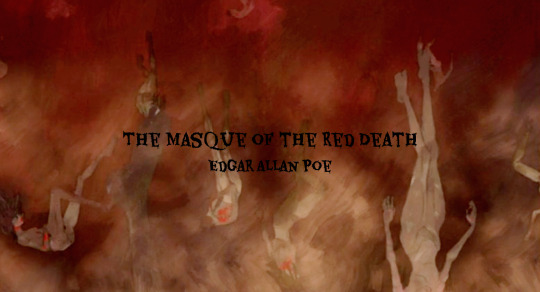
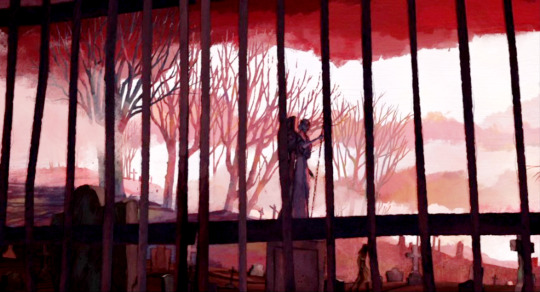


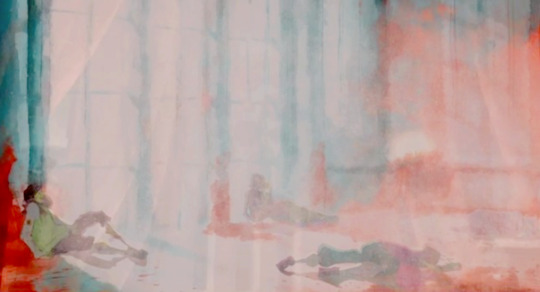

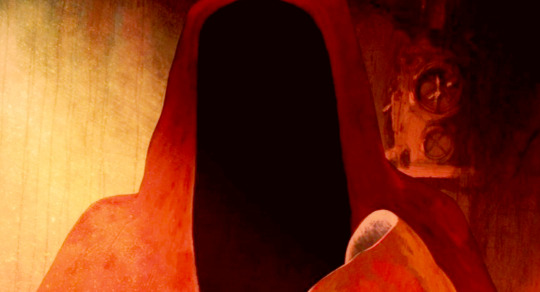
“The Masque of the Red Death”
by Edgar Allan Poe (Extraordinary Tales)
A tale of a masquerade ball where the bourgeoisie indulge in gluttonous sin while the poor outside perish from a deadly plague. A mysterious figure appears and guests begin to die. An allegory about the inevitability (and equity) of death.
#Edgar Allan Poe#The Masque of the Red Death#horror#horror fiction#fiction#Extraordinary Tales#art#gothic art
34 notes
·
View notes
Text

Five of Edgar Allan Poe s best-known stories are brought to vivid life in this heart-pounding animated anthology featuring Sir Christopher Lee, Bela Lugosi, Julian Sands, Roger Corman, and Guillermo del Toro.
youtube
#edgar allan poe#dotd#died on this day#extraordinary tales#anthology#halloween#horror#horror fiction#the raven#the tell tale heart#the pit and the pendulum#the fall of the house of usher#the masque of the red death#the facts in the case of m. valdemar#guillermo del toro#sir christopher lee#bela lugosi#roger corman#julian sands
8 notes
·
View notes
Video
youtube
Sergio de la Puente - The Pit and the Pendulum Suite
Ну и заодно, пока писался диск, захотелось переслушать музыку из Extraordinary Tales. Подумываю потихонечку выкачать весь саундтрек с Ютуба.
Прожить бы до Хэллоуина.
3 notes
·
View notes
Text
On today’s stream: it’s Halloween month, and we have two thematically appropriate works to respond to! We start with a Ko-fi request, talking about the Edgar Allan Poe animated shorts compilation Extraordinary Tales (available to watch free and legally)! And we wrap up with a live-reaction to Chapter 79 of Witch Watch!
Watch along today at 11 AM EDT on Twitch and YouTube.
And read along as well: an initial script for today’s stream is below.
youtube
Intro
Let’s get started. Today is September 25, 2022. This is Sunday Morning Manga. I am Derek S. McGrath, my pronouns are he/him/his. I’m here every Sunday, 11 AM EDT on Twitch and YouTube. You can read my writing on Tumblr and WordPress, @dereksmcgrath, and email me at [email protected].
If you like what you’re hearing, consider a monetary contribution. Putting together this stream takes a bit of work, and your tips help pay down costs for setup and subscriptions. You can tip me Ko-Fi, ko-fi.com/dereksmcgrath. Thank you for your consideration.
Today’s Reactions
And speaking of Ko-fi, for all of October, the month of Hallowen, I will be entertaining any spooky recommendations from my Ko-fi contributors! For the first October livestream, we’ll be talking about the American/European animated shorts compilation, Extraordinary Tales, based on the works of Edgar Allan Poe. After today’s livestream, you can watch Extraordinary Tales free and legally on Amazon Freevee.
And we’ll end the livestream with more Halloween-related content, with a live-reaction to the newest chapter of Witch Watch! You can read Chapter 79 on the Viz web site.
Accessibility and Links
Links to this chapter and other content from today’s stream are available on my web site, dereksmcgrath.wordpress.com. There’s also a script for today’s stream and all images–without a transcript to the live-react, because it’s live and it’s not transcribed yet. If you have recommendations for how I can add live-captions to these livestreams and more quickly add captions to the YouTube recordings, please email me at [email protected].
Halloween Month Review: Extraordinary Tales
Let’s start with today’s Halloween Month Review, and it’s a recommendation from Ko-fi contributor Ellak Roach–thank you, Ellak. We are looking at Extraordinary Tales!
What’s It About?
This 2013 animated shorts compilation is based on the works of nineteenth-century horror, mystery, and debatably romance (depending on you define it) author, Edgar Allan Poe. It was directed by Raul Garcia (who has also worked on The Fairly Oddparents, The Simpsons, and numerous Disney films, from Who Framed Roger Rabbit up to the 2019 Aladdin). And it features acting and narration from creators with long histories related to Poe’s works and horror in general, both actors such as Christopher Lee and Bela Lugosi, and directors such as Guillermo del Toro and bane of Mystery Science Theater 3000 fans Roger Corman.
Disclaimer: Academic in the Vicinity
And…I got to be honest with you, I’m going to be insufferable. Let me start by frontloading: yes, I thoroughly enjoy this film, and I recommend that you watch it. But I’m also so hyper-critical of this film due to my experiences researching and teaching Edgar Allan Poe that just about everything I’m about to say is going to make me sound like the opposite, as if I don’t recommend this film.
I have taught a single-author course on the works of Poe, one of my dissertation chapters was about Poe, I have presented on Poe a few times at conferences.
So, I’m both too close to this–and paradoxically not the right person to talk about it.
For every moment I watch this, every time I can say, “I understood that reference!” because of something I read or taught or wrote, there is another moment where I sit back and think, “Gee, there is still so much about Poe that I am not equipped to talk about.” I don’t feel like I'm researched enough to comment on whether these animated shorts get anything “wrong” per se about Poe–which, actually, isn’t that big a problem, but also kind of a pretty big problem.
What do I mean by that?
Yes, this is a set of animated shorts that benefit from knowing about Poe. The five shorts are united by a framing narrative, featuring a talking raven that has a conversation with a certain disembodied voice. Jumping into this framing narrative does spoil some minor twists to the story, so, the best I can say is this: if you know Poe’s biography, and the topics of his works, you’ll gain a lot from the framing narrative. That means the narration is really on the nose, though: it is practically nudging you, to say, “Get it? We’re referencing ‘Ligeia’” (which, weird, as I never pronounce the name the right way), or “To Helen,” or “A Dream Within a Dream.”
Yet, even as the framing narration is name-dropping so many of Poe’s works so forcefully to shake you violently, a lot of that framing narrative, I think, leans into less about the real Poe and more about what we know from what he wrote, and what people wrote about him–and, thanks to the unreliability in some of the initial biographies, has emphasized Poe’s alcoholism, depression, lost loves, and fascination with death, potentially reducing him to just a symbol for those ideas and not the complexity of the real person–good and bad. The good news is that the framing narrative, and all it draws from Poe’s real life, is not a major focus of the film–the focus is instead on the five shorts, and each one sticks close to the original Poe short story that they adapt, enjoyable if you don’t know much about the real-life Poe–but, as I’ll talk about later, the shorts do suffer if you have never read those Poe stories, or, really, any Poe before.
And I admit that, in my teaching of Poe, I definitely lean less into the real-life Poe–admittedly because, for all I read about him, I don’t think I have a grasp on him–and more on how his works as a whole present a persona, how biographers, scholars, actors, and later writers enhanced or subverted that persona when portraying him, and how the popular imagination has taken what worked in his literature and adapted it forward, or took what didn’t work, is outdated, is sexist, is racist, and subverted it to make something even better.
So, when I’m talking about Extraordinary Tales, I am insufferable, overly critical of what I don’t think works because I’m too close to Poe stuff, and admittedly ignorant of more about Poe’s life and works that make my remarks sound foolish.
Jerky Animation
Let’s start with the negative, then, about what doesn’t quite work for me. And I hope it comes across that those complaints are minimal, because, really, I do recommend watching this compilation once, if just for the animation in the last short, “The Masque of the Red Death”–but we’ll get to that.
Let’s talk about the production. In addition to the frame narrative are five shorts, each adapting one of Poe’s short stories. Those five stories: “The Fall of the House of Usher,” “The Tell-Tale Heart,” “The Facts in the Case of M. Valdemar," “The Pit and the Pendulum,” and “The Masque of the Red Death.”
The animation is hardly rudimentary–but it is a case of the artifice sticking out. “But doesn’t all animation stick out?” I guess I mean that it is harder for me to suspend disbelief in most of the shorts, whether given limited animation in the framing narrative–one talking raven, numerous immobile but talking statues–and amongst most of the five shorts. It is a marionette CGI model setup, so you’re not getting something as fluid as you would in other CGI animation, even back in 2013 when the shorts were first compiled.
That being said, even for how jerky the animation can get, that’s not entirely a bad thing. It lends a slightly inhuman quality, which is the desired effect when you have the black-and-white “Tell-Tale Heart” (with exaggerated contrast, to really sell the black-and-white morality that the narrator is trying to present to an audience that recognizes his madness), or the comic book-inspired paneling, color arrangement, and poses of “M. Valdemar.” But when the first short, “The Fall of the House of Usher,” has to sell the audience on the animation, and it is so jerky in parts, it is a little hard to take some of the shorts seriously when fixating on the technical limitations and not feeling as immersed in the story as I wish. The last bit of action, where the house collapses on itself, looks great–because it is largely in shadows, which is a suitable animation shortcut that works, was even used to make the dinosaurs in Jurassic Park look more believable than they actually would in broad daylight.
I think my complaint about the animation owes in part to whether I am used to 3D-model animation as a format for storytelling. For me, anyway, a lack of some tangibility limits enjoyment, and some 3D animation still fails to retain that tangibility and sense of weight that I enjoy in other animation. Stop-motion has a physicality and weight. 2D animation retains, or can fake a retention of, tangibility–line thickness on a page or a cel, moving from cel to cel, as opposed to anatomizing the character into parts. (This ignores that even 2D animation also anatomized its characters for ease of animation: look at how Hanna Barbera animated only above the neck on The Flintstones).
Visually Dynamic Artwork
It’s why having the comic book look to “Valdemar,” and the painting look to “Red Death,” that enhances those stories and makes me feel like I’m looking at actual artwork from paintings or comic books coming to life. That reminder of something that exists in physical space–a painting, a comic–helps me process what I see in this film as having some believability.
Narration and Acting
The use of certain narrators also comes across as cheap or stunt casting. The use of Bela Lugosi as narrator to “The Tell-Tale Heart” is from archival material–something to license, I’m sure, but not the same as recording a new actor. Julian Sands–Valmont from Jackie Chan Adventures for animation fans–is excellent as narrator and all characters in “Valdemar,” but it is awkward hearing his voice yet seeing a narrator so obviously homaging Vincent Price in physical appearance. Roger Corman, a director of numerous Edgar Allan Poe films, cameoing as Prospero in “Red Death” is hilarious for people who know Poe, but may come off as awkward for anyone else jumping into the film. It’s one line for Corman, so it doesn’t stand out as bad, exactly. I can’t say that Guillermo del Toro as narrator to “The Pit and the Pendulum” is bad, either–but it lacks a sense of performance that we get with the other actors, whether how appropriately over-the-top Lugosi is as the unhinged “Tell-Tale” narrator, or how clinical Sands comes across as the narrator to “Valdemar.” Del Toro is just kind of there–not bad, but nothing that I remember selling me on how good he was. Perhaps that performances reinforces how shell-shocked the “Pit and the Pendulum” narrator has become.
And, as sacrilegious as it will sound, I’m not sure Christopher Lee’s performance, or the direction for him, quite captures what “The Fall of the House of Usher” needed. The agedness works for how pathetic and old Roderick Usher has become, and Lee does well enough differentiating his voice as the narrator (who is also Roderick’s old friend) from Roderick himself. But I feel like there is something missing, perhaps in narration, to enhance what is already good in the animation.
Final Thoughts: On Adaptation
So, what do I think you should take away from my remarks about Extraordinary Tales? I did start off by saying you should definitely watch it–it is free to watch with ads on Amazon’s Freevee service. But the problem I have recommending it, owes to how it works or fails to work as adaptation.
A question that concerns adaptation, for anime as much as it does here with Extraordinary Tales, is this question: how much does the work stand on its own, if you don’t know the source material? Because Extraordinary Tales is so steeped in Poe lore that I don’t see someone getting enough from it without knowledge–in terms of the character designs (someone resembling Vincent Price), the cameos (Roger Corman), alluding to people in Poe’s life on a first-name basis. Same problem for when anime adapt manga but cut content–leaving it for the die-hard fans to fill in the blanks because they read the manga first.
I want to believe Poe is so popular that you have absorbed his works by cultural osmosis. And that works well enough with “The Masque of the Red Death,” a story that sadly is more relevant during this ongoing COVID pandemic that fools and hucksters pretend is gone, or “The Tell-Tale Heart,” where the animation, in black and white, does well at conveying the horrible eye of the old man and why that eye compelled the narrator to kill him. But if you don’t know hypnosis and the pseudo-science of mesmerism, the liminal space between life and death, I think you’ll gain less from “Valdemar.” If you never read “The House of Usher,” I think you’ll be like me reading Bungo Stray Dogs and shocked at what Studio BONES cut from the anime–you’ll watch “The House of Usher,” and get upset about your favorite remark not being in the narration.
And that’s another thing: the animation is so dependent on narration in all but “Red Death,” that I'm not sure the stories work so well on their own. It is a cliche that animation should work on its own without having to hear anything–and it’s not true, anyway, because some of the best narration still needed music, sound effects, and dialogue to enhance the animation, not to distract from it but to complement it. “Valdemar” and “Tell-Tale” are so dialogue heavy that it is unavoidable having that narration. But “Pit and the Pendulum” makes visual choices that don’t match how I imagined the original story as I read it on page. And “The Fall of the House of Usher” depends on narration to substitute for, not complement, what the animation should show but does not, opting for sweeping views through hallways rather than letting the characters act out what the text was describing.
So, who would I say should watch this film? If you want to get into Poe, watch it. If you have read Poe, watch it. That’s the audience–current Poe fans, and aspiring Poe fans. And if you are either one, you will get a lot of good out of Extraordinary Tales, regardless how tepid I may sound in my recommendation, which belies how much I really did enjoy the shorts. If I had to pick a favorite, “Red Death” is probably the best visually and as an example of what animation as a medium can do, while I think “Valdemar” is best at combining what else animation needs–music, acting, narration, dialogue, story–to actually tell a story with a beginning, middle, and end.
About Today’s Manga: Witch Watch
Let’s shift from the spooky works of Poe, to a spooky manga. Today’s live reaction is about Chapter 79 of Witch Watch by Kenta Shinohara, translated by Adrienne Beck and lettering by Annaliese "Ace" Christman.
Plot Summary
What’s Witch Watch about? Here’s the summary from the Viz web site:
“A teen witch wants to get familiar with her familiar! From the mangaka of Astra Lost in Space!”
To the point–although probably more sensationalized than what is otherwise a pretty cutesy tame manga actually is.
We’ll talk more about the mangaka, Kenta Shinohara of Astra Lost in Space fame, in a moment. But let’s first expand the plot summary, this time reading from TV Tropes:
“The story follows Nico Wakatsuki, a clumsy and cheerful teenage witch who, after finishing her magical training, moves in with a longtime friend named Morihito Otogi, who is actually a human-looking ogre. Nico plans on making Otogi her familiar, thinking it will help strengthen their relationship as a possible couple.”
I’ll expand that plot summary further to add that, along the way, Nico befriends other figures we imagine from Halloween stories, such as a vampire and a werewolf, who also end up moving in with her and Morihito.
What Works
I will admit, whenever I pick up Witch Watch, it is a manga I skim, not read. Like, I put in my time, page by page, on current manga I really like: Blue Box, Mashle, and to name some non-Viz ongoing comics, Bungo Stray Dogs from Yen Press and Servamp from Seven Seas. But Witch Watch? I admit I had to read some plot synopses to recognize what I missed in the ongoing plot, because there isn’t much of one. Each chapter is pretty much the daily hijinks of some magical people as they try to keep up the appearance of being human while going to a human high school in Japan. That’s all pretty conventional and nothing groundbreaking.
So, what works in the manga is going to be four elements.
First, the artwork–which is good, especially in facial expressions.
Second, the paneling–which is nothing that really holds my attention, owing more to how this is a conventional sitcom-y comic that, like a sitcom does with camerawork, just wants to do what is most effective for the story, not what will distract from the jokes.
And speaking of, third, the jokes–which are, again, nothing groundbreaking, but the comfort food equivalent of comedy, with a lot of wordplay…and literal comfort food comedy.
Like, just two chapters ago, Chapter 77, was a hilarious one-shot chapter where our characters magically animate a piece of bread to act as a fortune telling device, but the bread can only speak in words related to bread, so they have to guess what the bread means when answering their questions, requiring impressive work by the continually dependable and talented translator Adrienne Beck to get these gags to work from Japanese to English. And it is about bread from around the world–while avoiding a trope I hate, the “food from around the world is how we relate to each other and cross cultural differences,” which, nah, we cross cultural differences by working together, not saying, “I can’t be racist because I like this food from this culture.” But I’m getting off topic.
Finally, the fourth element: the characters. And…yeah, I barely remember the names of any character in this manga, so I’m going to have the wiki and the TV Tropes character pages open to remind me who is who…Or should I say, which witch is which? …I’ll show myself out.
Look, you can’t blame me for that corny joke–this is a manga by Kenta Shinohara! To paraphrase Jim Henson, yes, that joke is terrible, but it’s worthy of Witch Watch.
Kenta Shinohara and Gintama
I have not read enough of Shinohara’s previous series, Sket Dance, although I’ve seen some episodes of its anime and enjoyed what I saw–and, jeez, is the character Switch speaking to me in terms of impediments to communication. And after sitting through all of the anime adaptation of Shinohara’s manga Astra Lost in Space, I have to say, I appreciate Shinohara getting back to some lighter fare, because, jeez, that series bounces between serious content and goofy comedy so abruptly that it is still emotional whiplash.
Across those two series, Sket Dance and Astra Lost in Space, you can see in their DNA the influence of an earlier work: Gintama. And that should be obvious, because Witch Watch creator Shinohara was an assistant to Gintama creator Hideaki Sorachi.
Okay, so he was an assistant–so what? How do I see the influence of Gintama on Shinohara’s works? Well, Sket Dance retains what Gintama had: that large cast size, every chapter is pretty much a one-off before it starts with some extended story arcs and character progression. Meanwhile, Astra Lost in Space ditched a lot of that, stuck to a core set of just a few characters, kept up one ongoing plotline–but kept the creative extraterrestrial designs like what you get out of Gintama. But taken together, Sket Dance and Astra Lost in Space have, together, a different philosophy than what you get out of Gintama, as well as a different tone–but I’ll say more about what those differences are in a moment.
While I enjoyed Astra Lost in Space, it was teasing out a long mystery that, once you learn the answer, is a little underwhelming for rewatch. And some decisions by characters come across as less “that was believable” and more “we needed them to do this to keep this plot moving, even if it was a decision that is silly.” I’ll say I didn’t expect the mystery to unfold as it did upon first viewing, so it takes a bit of time to realize, “Oh, that’s where this was going all along.” But Astra is a rather depressing sit-through that, to rewatch it, takes a lot out of me emotionally, and was a little darker than I wanted. That’s not to ignore similar darkness in Witch Watch. But every time I get back to Witch Watch, it tends to be a one-off chapter full of gags and shenanigans, more like the filler chapters anr filler arcs of GIntama.
Speaking of, probably my favorite chapter from Witch Watch is the one where Gintama creator Hideaki Sorachi…sort of. In Chapter 51, the story switches to have class representatives discussing school festival options. And in the crassest transition possible, Morihito interrupts to tell what he says was a story he heard (the translation is by Adrienne Beck):
"Back when a certain manga artist was working as an assistant, he talked to the boss he was working for about high school and festivals. The assistant talked excitedly about how fun it was to prep for them, while his boss--a manga creator who I won't name--said he despised the event." And then this creator turns, and it is Gintama creator Sorachi in his gorilla avatar form, picking his nose, smoking a cigarette, and scoffing at this manga creator–obviously Witch Watch creator Shinohara, back when he was Gintama creator Sorachi’s assistant–for enjoying school festivals. "He said, 'I used to sit in a corner and dis the crap out of those morons who played in the band, or who got stupidly excited about prepping for festivals.' He smirked then, his eyes the color of tobacco stains."
The moment is so abrupt, and ends so quickly, that it took me by surprise. It’s not that Witch Watch has not alluded to other works, including chapters stylized to look like Animal Crossing and the Osomatsu siblings. But this moment? This moment was so cutting.
This is the first time I noticed Shinohara enter his own manga to give a take-that at his former boss. And while it’s cutting, it isn’t mean-spirited–at least, not _that_ mean-spirited.
I mean, Sorachi was harsher on himself in his own Gintama, with his own characters mocking him relentlessly. And all Shinohara says here is that his former boss wasn’t as excited about school festivals as he was–which, not that surprising, Gintama is very much a story about post-high school people who can’t grow up, Shinohara’s Witch Watch, Astra Lost in Space, and Sket Dance are about high schoolers, and all the idealism butting up against the rest of the world that, hardly appealing to just young people, is still inspirational enough that older audiences will get something out of it. Sure, Shinohara, through his mouthpiece Morihito, talks about how he went on to make more high school stories, while Sorachi, quoting the manga again, “the gorilla kept drawing manga that were like those snarky, foul-mouthed radio shows that only play late at night." I mean, I guess you could read this as Sorachi having a limited audience compared to Shinohara–and it’s not an inaccurate complaint, and it’s not quite hollow, but it’s hardly that cutting: these are two mangaka who found their intended audiences, not just by age group but also sense of humor and philosophy. And for all the idealism and sentimentalism that I think Shinohara tries to pull out of readers of these high school stories, try watching any Gintama that isn’t making you idealistic and teary eye, whether the final film or, hell, the cigarette vending machine dying story.
Plus, that abrupt cut to and from Sorachi is so fast that it only enhances the comedy and got a good laugh out of me.
And the chapter ends with the students deciding on a haunted house, which, yeah, duh, most of the main cast are monsters, witches, and Halloween monsters, of course they would.
What Doesn’t Work
If there is anything that doesn’t work in the manga? Well, there’s an ongoing plotline about a teacher and a student being super fans of a certain manga, which, yeah, seems a little awkward to see teachers and students in high school being that buddy-buddy. And I do have criticism about the character designs: what is the point of making everyone magical if they all look human? We have in the main cast a witch, an ogre, a tengu, a werewolf, and a vampire–and they all just look like typical humans. They don’t even have unique outfits that reinforce their identities, or something iconic to cosplay as. I know, they are looking like this to emphasize that, regardless of their identities, they deserve to be treated as any human being would want–which, yeah, good moral, but the visuals are still insisting that these characters hide who they are to assimilate. And they look like this to maintain the conflict, that these characters have to pass as human–yet I can’t help but imagine the comedic potential of characters who look so not-human but are accepted as just human, or, rather, accepted as part of this world. I know, realistically, we can’t even have people in our world accept people for looking different. And Gintama already alternated between storylines with characters who passed as human and were treated as normal, compared to aliens who were so different in design that they were initially approached with caution, fear, or disgust.
Live-Reaction: Witch Watch Chapter 79
But that’s enough context out of the way: let’s get on with it and jump into today’s live-reaction of Chapter 79 of Witch Watch! You can read along at the Viz web site–Google “Witch Watch Viz” to see the new chapter. So let’s get started!
[Transcript of the live-reaction to be included later]
Contact (and Hire) Me!
Thanks for listening to this week’s stream of Sunday Morning Manga! Did you enjoy this new chapter of Witch Watch? Please share your remarks in the comments section–I will respond to whichever ones I can.
And if you did like what you heard, then all I can say is: hire me! Borrowing a line from The Professional Left Podcast with Driftglass and Blue Gal, this is not only something I want to do, I consider it a job. I work in education: if you liked my remarks about the Edgar Allan Poe film Extraordinary Tales, you can hear me talk about how to read and teach Poe’s “The Cask of Amontillado” this upcoming Tuesday at 11 AM EDT, as part of the American Literature I livestream on YouTube and Twitch. I’ve organized conferences, I’ve published on literature, films, and comics. I am currently seeking work in teaching, copyediting, research assistance, writing, or conference organizing. Job leads are welcome: please email them to [email protected].
If you have a request of something for me to talk about in the Sunday livestream, drop me a contribution in the Ko-fi tip jar–$1 minimum–and if it’s something I’m comfortable covering here and is pretty much the same kind of content warnings as anything else I cover here, I’ll consider it or talk with you until we find something I’m up for talking about. Halloween-themed suggestions are strongly encouraged–so make sure to get your $1 contributions in before next week if you want your Halloween content included in the livestream.
Next Time: Halloween Month Review
Next time, the Halloween month review will bring me back to manga, with some Lovecraftian horror–and remind me about something I forget, about the more limited role Halloween has in Japan compared to the United States. We look at Chapter 18 of the concluded-way-to-soon manga Magu-chan: God of Destruction!
Next Time: Live-Reaction
In addition to looking at Magu-chan, there will be a live-reaction to a new manga chapter–this one also ending pretty soon, with an anime adaptation around the corner. (Just don’t call the lead protagonist a zombie, even for Halloween month.) I’ll be talking about Chapter 129 of Undead Unluck!
Until next Sunday, I’ve been Derek S. McGrath. You have a good afternoon. Bye.
Links from Today’s Stream
My Links
Twitch
YouTube
Tumblr
WordPress
Ko-fi
Email
Series and Films Discussed
Extraordinary Tales
Witch Watch
Astra Lost in Space
Sket Dance
Gintama
Bungo Stray Dogs (Manga and Anime)
Blue Box
Mashle
Servamp
Magu-chan: God of Destruction
Undead Unluck
Other People’s Awesome Stuff
Professional Left Podcast with Driftglass and Blue Gal
Black Comics Chat
0 notes
Text
I started watching Kdramas this year and I do a lot of literature analysis in my normal life, so I found it really fun to find the tropes that were unique to this genre/culture that were different than what I find in Hollywood TV/movies and novels. I started with Alchemy of Souls and I was kind of amused looking back, because I never thought the SML had a chance with the FL but if I had known how strong the "they met as children and therefore DESTINY" trope is, I probably would have thought they would get together for sure!
Here are some of the unique tropes I've noticed:
-Leads meet as children and therefore DESTINY (What's Wrong with Secretary Kim, 100 Days My Prince, It's Okay to Not be Okay, Castaway Diva, The King's Affection, Sh**ting Stars, Destined with You, subverted in Alchemy of Souls)
-Reincarnation, which happens a ton but of course for the same reason Western media is littered with Chosen One/Saviour plots (played with in Alchemy of Souls and Extraordinary You, straight in Destined with You, Tale of the Nine Tailed, Moon in the Day, My Demon, The Story of Park's Marriage Contract... so many)
-Guy (usually) buys the girl shoes and then puts them on her. They also usually make a joke about her running away. (Tale of the Nine Tailed, 100 Days My Prince, Extraordinary You, Castaway Diva, King the Land, subverted in The King's Affection and The Forbidden Marriage)
-Guy (usually) gives/brings the girl an umbrella to protect her from the rain. I LOVE THIS TROPE, symbolism for protection and shelter gets me (straight in My Lovely Liar, King the Land, Tale of the Nine Tailed, Extraordinary Attorney Woo, subverted/played with in Alchemy of Souls, Business Proposal, Doom at Your Service, Castaway Diva)
-Not sure if this would count as a trope, but unique to the genre because we don't have formal speech in English and especially not in Canada where I live (we've basically started just going first name with everyone) I love it so much when the main characters use informal terms with each other for the first time. The subtitles don't always translate this well, but I know what the honorifics sound like and I'm all, "She didn't use "Mr." that time it's serious now!!!"
Anyway, are there more? I'm probably not catching them all!
Edit: Definitely some sort of trope around characters finding wild ginseng to solve a problem.
(I've only been watching Korean dramas by the way, I'm sure some of these tropes are shared by other dramas from China and Thailand. I just found the comparison with English language TV interesting.)
#kdramas#tropes#alchemy of souls#my demon#castaway diva#my lovely liar#king the land#tale of the nine tailed#doom at your service#what's wrong with secretary kim#100 days my prince#extraordinary attorney woo
421 notes
·
View notes
Text
Me, when becoming too invested in a kdrama:
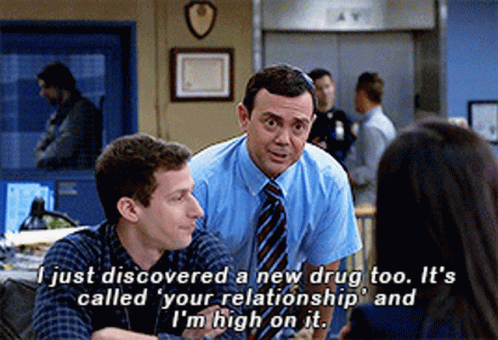
#kdrama#cinderella and the four knights#my love from the star#the legend of the blue sea#hyde jekyll me#mystic pop up bar#whats wrong with secretary kim#hwarang#our beloved summer#shooting stars#hotel del luna#beyond evil#w: 2 worlds#touch your heart#extraordinary attorney woo#tomorrow#hometown cha cha cha#the king eternal monarch#tale of the nine tailed#once upon a small town
2K notes
·
View notes
Text



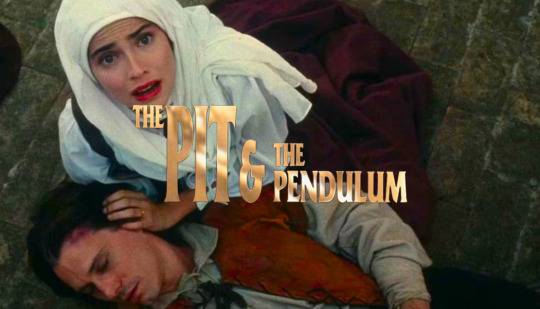

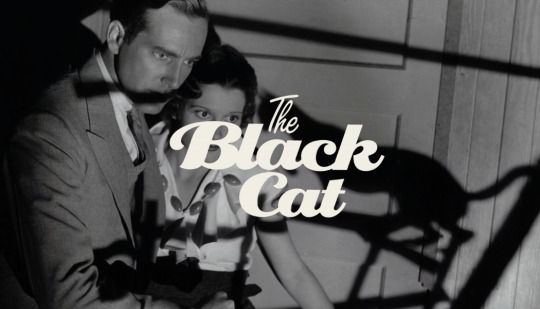
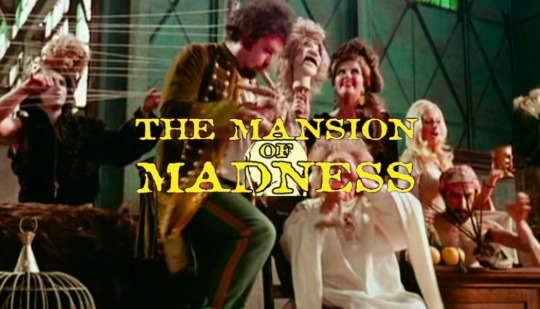
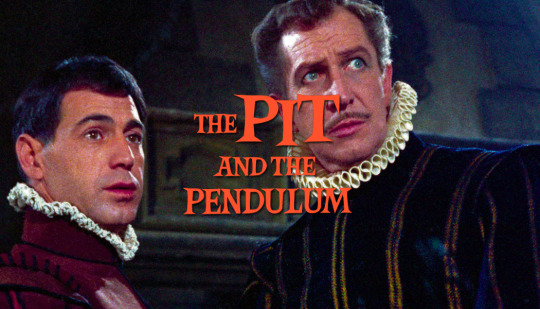

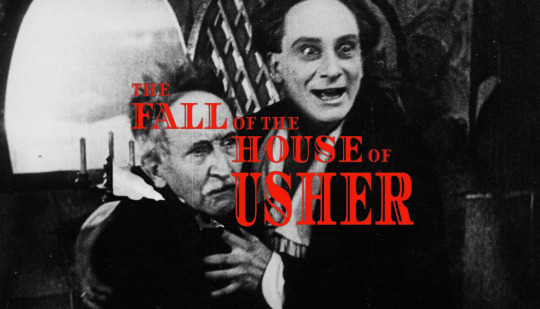
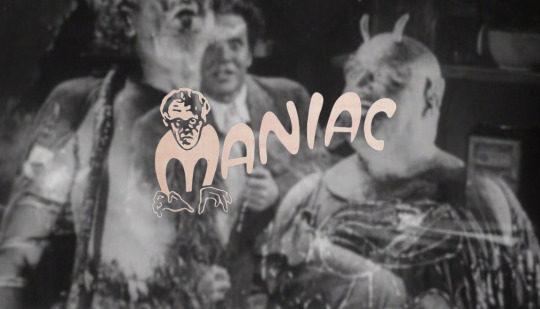
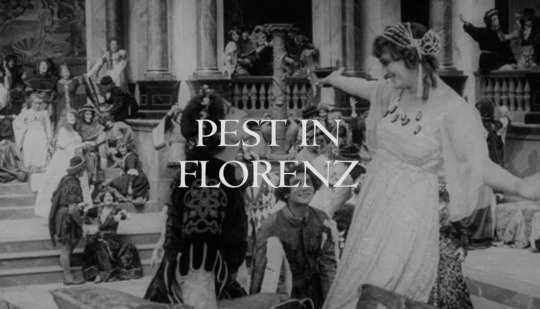
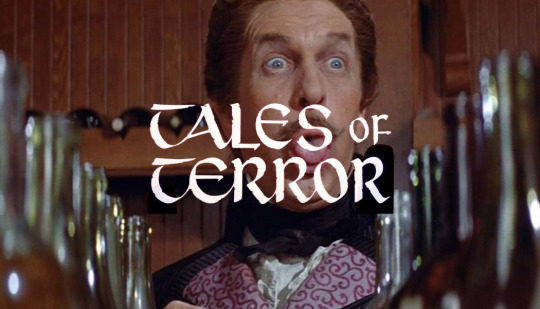
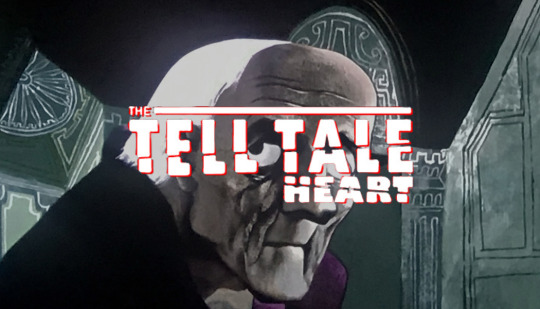

day 29 of horror: edgar allan poe's horror movies
#NOT TV#horror#horror movies#the masque of the red death#the fall of the house of usher#lunacy#the pit and the pendulum#the extraordinary tale of the times table#the black cat#the bloodhound#maniac#plague in florence#tales of terror#an evening with edgar allan poe#also named half of vincent price's films#edgar allan poe#moviesedit#filmedit#horroredit#cinema
270 notes
·
View notes
Photo

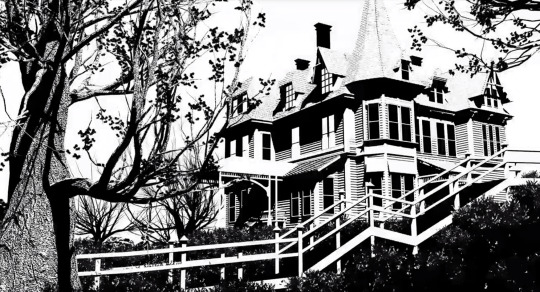
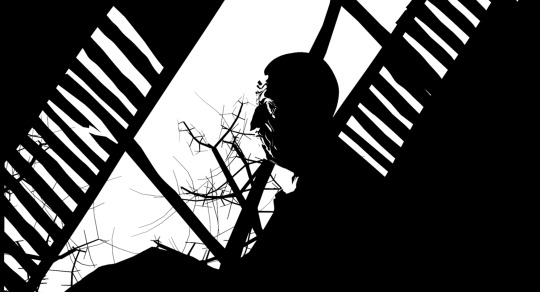


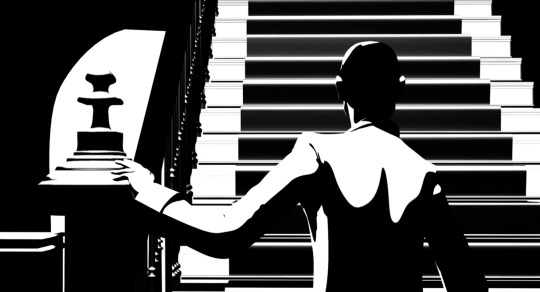
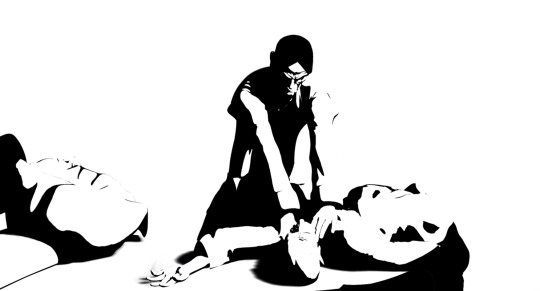
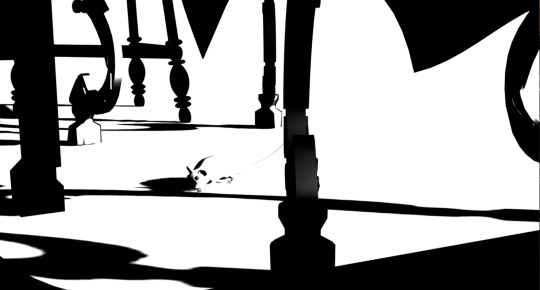


Extraordinary Tales - The Tell Tale Heart
#Horror Movies#horror aesthetic#Aesthetic#edgar allan poe#the tell tale heart#animated horror#Extraordinary tales
67 notes
·
View notes
Text

SUMMARY: An animated anthology of five tales adapted from Edgar Allan Poe's stories.
#extraordinary tales (2013)#animation#anthology#gothic horror#2010s#luxembourg#european movie#horror#movies#poll
91 notes
·
View notes
Text
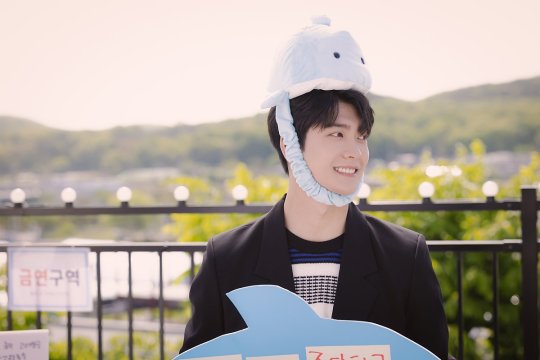
Recently saw a translation of KTO's interview on Twitter that says "KTO's favorite nickname is Young-woo's husband" but actually there are SO MANY CONTEXTS MISSING
What he actually said is that he really enjoyed a meme calling him 'HYL' (Husband of Young-woo Later on) which is a parody of his previous drama, 'The Tale of Nokdu'
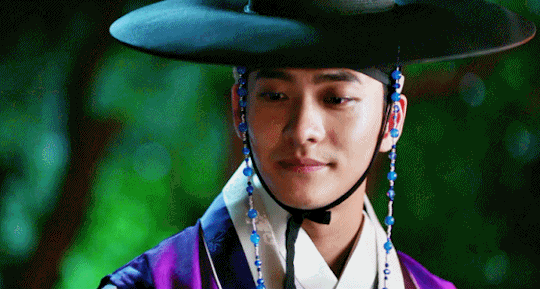
KTO was a gentle second lead in the romcom history drama (at least we thought he'd be)
Then in the middle of the series he suddenly turned out to be

A psychopath villain which is based on a real king of Joseon, King Injo. KTO immediately got quite famous after this scene since it was such a twist (not just because gentle second lead turned into a scary villain, but because real Injo is such a terrible king/father and most koreans hate him to guts lol so ppl who loved him as the gentle second lead were so devastated that he was actually King Injo lmao) and had so much impact.
Anyways, this korean subtitle revealing his identity in this famous scene says "Prince Neungyang, King Injo Later on" and it became a meme when a korean eaw fan made this
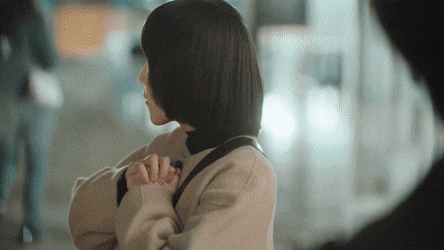
"Lee Jun-ho, Husband of Young-woo Later on"
with the exact history drama style subtitle lol and korean eaw fans started calling this meme and also nicknamed Jun-ho as HYL. So that's why KTO said this is his favorite nickname 🤣
2K notes
·
View notes
Text



There were once three brothers travelling along a lonely, winding road at twilight. In time, the brothers reached a river too treacherous to pass, but being learned in the magical arts, the three brothers simply waved their wands and made a bridge. Before they could cross, however, they found their path blocked by a hooded figure. And Death spoke to them.
#the quality said bye but i had to remake this after my computer crashed so here it is#ive been meaning to do this since 2021 because the parallel drives me insane. was waiting for that sweet season 3 footage yknow#his dark materials#hdm#hdmsource#lord asriel#marisa coulter#lyra belacqua#lyra silvertongue#bbc his dark materials#hdm spoilers#s3#the amber spyglass#hdmedit#my edits#extraordinary#the tale of the three brothers#parallels#this story doesnt fit completely with this trio but i thought it was an interesting comparison still
134 notes
·
View notes
Text
K-Dramas recommendations & short reviews
Because I've watched way too many to not make a list. Warning: I like romance and fantasy a bit too much.
These shows made me cry. 10/10. Five stars. Recommend to anyone. They live in my mind rent-free:
Extraordinary Attorney Woo (2022) - Attorney Woo is such a wonderful person, I love her character. I can't say much about the representation, but I like that it opens up the conversation around autism & neurodivergence, discrimination and prejudice, particularly in work environments. I rarely like shows about law or lawyers but I was surprisingly engaged with the cases and the story. It deserves a second season. (The only thing I don't like about this show is they're pushing for a MinWoo and Choi Su-Yeon ship. Which huh--disrespectful.)

Hotel Del Luna (2019) - A great place to start with k-dramas if you like paranormal fantasy. This show has such a special place in my heart. I wanted a different ending but I am okay with it because it was a tight narrative. The main character is iconic (Man-Wol please step on me). The show has amazing sets, AMAZING costumes, an amazing OST, amazing and heartbreaking performance by Yeo Jin Goo. The main couple is so soft; like they're such good friends and coworkers and gentle with each other (eventually). It's enemies to reluctant friends to lovers. It's perfect for asexual viewers who want more than physicality in their romance shows. Cons: the secondary characters' goodbyes and backstories left a little to be desired. A few other nitpicks like Chang-Seong is the one to suggest the main character a new hobby instead of her just discovering it by herself.
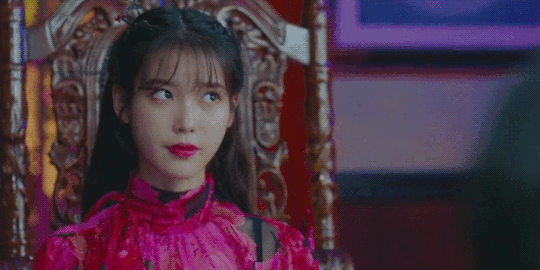
It's Okay to Not Be Okay (2020) - Also a good place to start with k-dramas. This show is a lesson in good narrative; this has perfect writing & storytelling. The cast is so good. The female lead is an icon. The character work I excellent. The mental health issues are so well addressed and it taught me a lot about mental health I wasn't aware of. Each small minor character plays a very important thematic role. (The villain isn't the best thing ever but she serves her role in the themes and plot.) The production and the storytelling with the children's book animations are just *heart eyes*. The OST is so good too. You need to watch this to understand how good a k-dramas can be. A must-watch.


Goblin: The Lonely and Great God (2016) - This is the most iconic fantasy/paranormal k-drama ever. A lot of current tropes were started here I think (including the weird k drama last-episode time jump separation of the main couple). This show broke me. You will cry. The bromance and comedy are amazing here too. Gong Yoo and Dong Wook Lee have great chemistry. Main female lead is so cute and her character is so heartwarming. The ending felt a bit rushed. The death, existential related stuff with the grim reapers and such is so good tho.

Business Proposal (2022) - Best rom-com ever! (Well, it could be gayer tbh.) It's my new comfort show. I already watched it twice. It's campy, hilarious, chaotic, iconic and messy in a way that feels like real life (but obviously played up for drama and comedy). Excellent character work. The love interest is definitely written by a woman. Gorgeous cast (Sejeon omg I have a crush, but also the others). It was too short! I would have loved another episode, and more of Grandpa and Ha-Ri. Warning: this has the weird kdrama last-episode time jump couple separation.
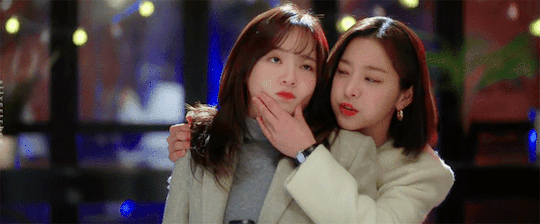
W: Two Worlds (2016) - A young resident medic accidentally finds her way inside the webcomic her father created. Like, that premise is killer. We have Lee Jong Suk at his finest here; the character fits him so well. He was born to play a lead. This show has amazing meta-commentary on writing, authorship, and existential crisis. The confrontation between the webcomic character Kang Cheol and the author is insane! The main couple is an epic pair. Would rewatch. High wump value. Cons: The second part could have been more swoony with the romance, Kang Cheol kind of became a bit cold. (A warning: this show also has the k drama weird last-episode time jump couple separation.)

Would recommend with popcorn, I rate them 8/10:
Crash Landing on You (2019) - Really good. The main couple has the best chemistry I've ever seen. It's not that much of a personal fave show, but still pretty awesome and will tug at your heart. It got a bit overly dramatic in the last episodes and again, has that k-drama last episode weird time jump couple separation, but here it actually makes sense. And sort of mirrors the separation and eventual unification of the Korean Peninsula. It was very interesting to see the contrast between North and South Korea.
Shooting Stars (2022) - Aside from the terrible, horrible, insulting Africa storyline (where the male lead goes to 'help' African kids with water scarcity, not even a country name is called, he just goes to *gestures vaguely* Africa to help goddammit he's such a beautiful soul! /s) There's a weird creepy sugar mommy wannabe side storyline and it's weird and out of nowhere. But the rest of it is good and campy and the main characters are so cute. All the couples are cute. The male lead is a cute disaster. Female lead is also a capable cutey but a disaster when it comes to romance. It's hilarious. I love all characters. It's fun. It's great. It shows a very interesting side of the entertainment industry.
While You Were Sleeping (2017) - A man and a woman who don't know each other have precognition powers and after they meet, they use them to take down a corrupt lawyer. The show isn't very heavy on the romance, tough the pair work pretty well together. I liked the main actress. Lee Jong Suk has chemistry with anyone. The male role was not exactly a good fit for Jong Suk. He's so much more naturally charming than the character. It's a fun show to pass the time. The found family is nice and all the characters work great together. The mom is great.
The King's Affection (2021) - I'm going to be honest, I didn't finish watching this. Ups. I got bored after episode 15. It's a very slow show but what I watched was quite good. It was just not a show for me. Having a bisexual male lead was awesome, I appreciate that he falls for the main character while he thinks she's a man. (Could be gayer tho, just saying.) Pretty good discussions and reversals of gender cliches. It has complicated parent-child relationships that are very well written which gives a lot of heart and heartbreak to this story. The political stuff gets very convoluted. I really wish the queer part was bigger though, and not limited to the main couple. We could even have poly representation! I still have half a mind to finish this but I don't know There are so many other shows I'd rather watch instead. (Boy, I really need to get into the actually queer side of k-dramas because the side I'm currently on is giving me crumbs.)
Lovers of the Red Sky (2021) - The premise was so cool. This has so much lore I like and the setting is beautiful and rich, but it also has so much lost potential. The plot is very weak in the second half and could be restructured. I loved the atmosphere, costumes and the actors and their characters: the blind cursed scholar nobleman, the female genius cheeky painter and her friend trio and the prince are all great characters. Ahn Hyo Seop is pretty good in it and looks very pretty indeed in historical costume (but the design of the villain creature he's possessed/cursed with is so, so bad omg). Great premise failed execution. Good first half but it went over the rails quickly. Still entertaining if you like historical fantasy.
Romance is a Bonus Book (2019) - It's a bit slow and could have done so much more with the female lead and her child. She's a bit underwhelming and her daughter is barely in the story. The second female character played by Jeong Eu-Gene was awesome, I love this actress now. Lee Jung Suk is always looking hot and being an excellent actor with what he's given; he's very charming here. He could have chemistry with a piece of wood and yet I wasn't that fan of the romance. Maybe it's just because friends to lovers isn't my cup of tea. There's a weird out-of-nowhere backstory between the male leads. The commentary of ageism in the workplace is a bit surface level (it's not that big of a deal for the company if you're overqualified for a job, the point should be that is an issue for you and your career, who is too good for the company). You can tell the writers really care about books; it's definitely a love letter to editors and an interesting window into the world of book publishing; you can feel the love editors put into making books. Bonus: the founding members of the publishing company have very funny moments.
Do no recommend:
King: Eternal Monarch - Couldn't even finish this. I was so, so confused. The dialogue, narrative and backstory make no sense! Everything is so unnecessarily confusing. There's no chemistry between the main couple. The king and the bodyguard had more chemistry. Lee Jung-Jin (playing the villain Lee Lim) & Woo Do-Hwan (the bodyguard) carried this show and are pretty much the only thing good about it. The female lead is sidelined. It had an intriguing premise but failed execution.
What's Wrong With Secretary Kim - Skimmed most of the second half. It's a mess. The love interest CEO is such a narcissist and asshole he wouldn't be able to keep a working, healthy relationship with his partner without some serious therapy first. The female lead seems to be repulsed by him most of the time even when together and even looks scared when they get intimate. There's an unnecessarily convoluted plotline about the main lead's brother and a kidnapping in their past. It has tonal issues and it's cringy rather than funny. The secondary characters are just a lot of useless filler. The female lead sacrifices her independence and dreams to be with the main guy. Just go watch Business Proposal instead.
Moon Lovers: Scarlet Heart Ryeo - The only pro of this show is IU. The romance went the undeveloped route. Cheap-looking production, with too many episodes, melodramatic, characters pivot in place instead of naturally developing; it's definitely a telenovela. The point that the female lead is from the future doesn't even matter for the story (should have made her a Goryeo historian instead of a random cosmetologist). Pass!
Tomorrow - Could not finish watching. Please, please don't watch it if you're dealing with depression, bullying or suicidal thoughts. Please don't. By episode 2 I was just screaming at the screen. Problematic? This show invented the word problematic. The supernatural task force that's supposed to save people with suicide risk is terrible at therapy and suicide prevention. They tell the person trying to commit suicide, literally on the edge of a building about to jump, that they should do it, that they're weak, they should just jump, go ahead! Like ... what????
Mystic Pop Up Bar - Didn't capture me by episode 2. Got bored. Some say this is better than Hotel Del Luna but I don't agree.
Abyss - It's a weird tonal mix. Would have preferred if it leaned further into the absurd (go all in with the humour or don't at all), the sci-fi or the murder mystery. Instead of just revealing by episode 3 who the murderer is, quickly changing the plot into a chase after the villain, even though he's so lame. But also he is keeps killing people and it gets dark. And then we cut to the main couple being silly and cute. It's so jarring. The leads have a great dynamic and Ahn Hyo Seop knows how to differentiate his characters really well, give them their own flavour., but in the end it's just a cool premise, failed execution. Very average.
Currently watching:
The Crowned Clown - Very interesting concept and gorgeous, gorgeous visuals. Plot drags a little. Has some tonal problems and oversimplification of politics. The best part is when Yeo Jin-Goo acts with himself haha. He's such a talented actor.
The Uncanny Counter - Get's a bit melodramatic sometimes but all four main actors are insanely good.
Tale of the Nine-Tailed - The main romantic relationship needs a lot more development, but the entire show is worth watching just for Dong Wook Lee and Kim Bum as brothers.
Alchemy of Souls - 6/10 so far. Currently watching season 2/part 2. Aside from the prince, I don't particularly care for any of the characters. Unpopular opinion but the main romantic pair have no chemistry. Mu-Deok has more chemistry with Yul and the prince, and the prince has more chemistry with Jang-Uk. The lore is confusing and inconsistent: it breaks its own rules. (Two souls in one body what?? when was this established as a thing?) There's not enough foreshadowing and setting up the rules of magic in this world (the Ice Stone comes up as a deux ex mahcina big plot point in the last second). It also drags; the episodes are too long. There's a lot of saying and ultimately the show doesn't deliver. The narrative structure is straight out of a fantasy Wattpad. The set and costumes are fun and cool for a fantasy world, and the first episode was great.
#k dramas#kdramas#recommendations#tv show recs#hotel del luna#it's okay to not be okay#goblin the lonely and great god#extraordinary attorney woo#business proposal#w two worlds#romance is a bonus book#lovers of the red sky#the king's affection#while you were sleeping#shooting stars#sh**ting stars#crash landing on you#alchemy of souls part 2#the uncanny counter#tale of the nine tailed#the crowned clown#tomorrow kdrama#media recs#media recommendations#k drama reviews
83 notes
·
View notes
Text

In Tow, Oil on Canvas, 60x50cm,
Even in the dream world, beings can become lost.
Fortunately, these creatures are very social with each other.
If someone breaks down on the road, you will be taken in tow.
It doesn't matter where you are stranded, you will be taken to safer places.
https://www.schaap-art.nl/product/in-tow/
#fairy#fantasy#beasts#fairy tale#ed schaap#illustration#creature#magical#steampunk#science#scifi#strange#extraordinary#eyes#fantasy illustration#illustrator#oil on canvas#oil painting#original character#post apocalyptic#painted#peculiar#contemporary art#fantasy art#artist#dark fantasy#dream#design#funny#science fiction
21 notes
·
View notes